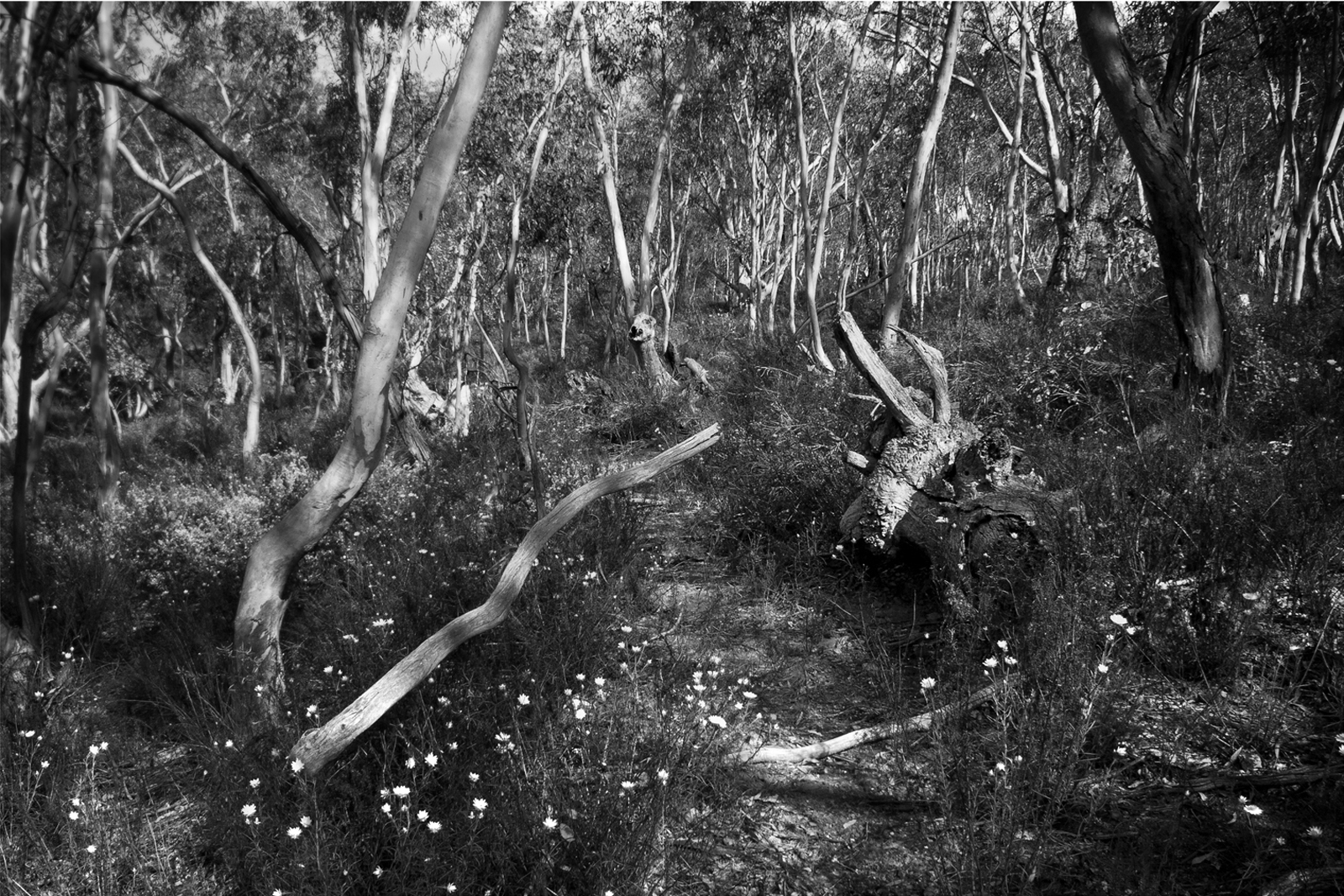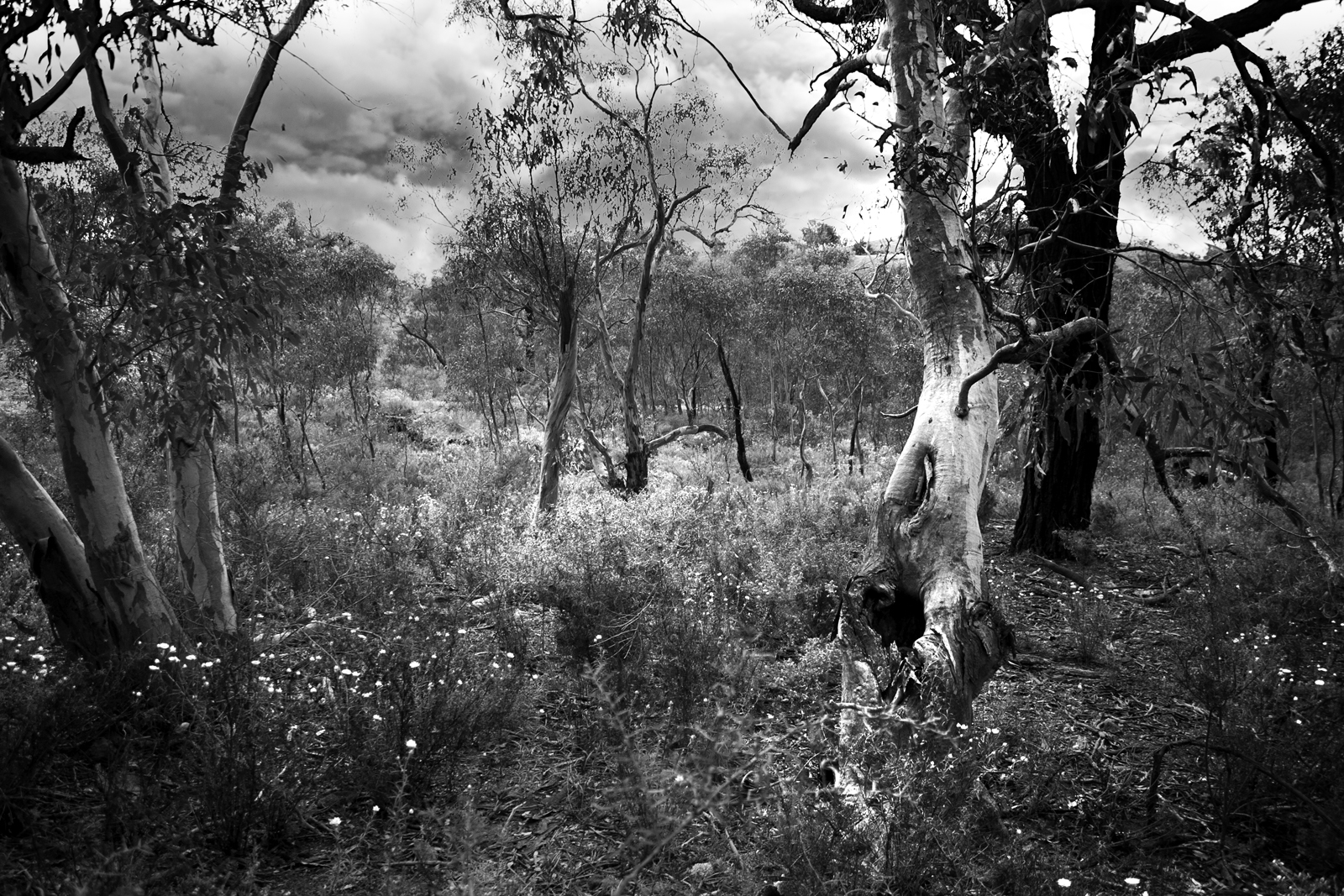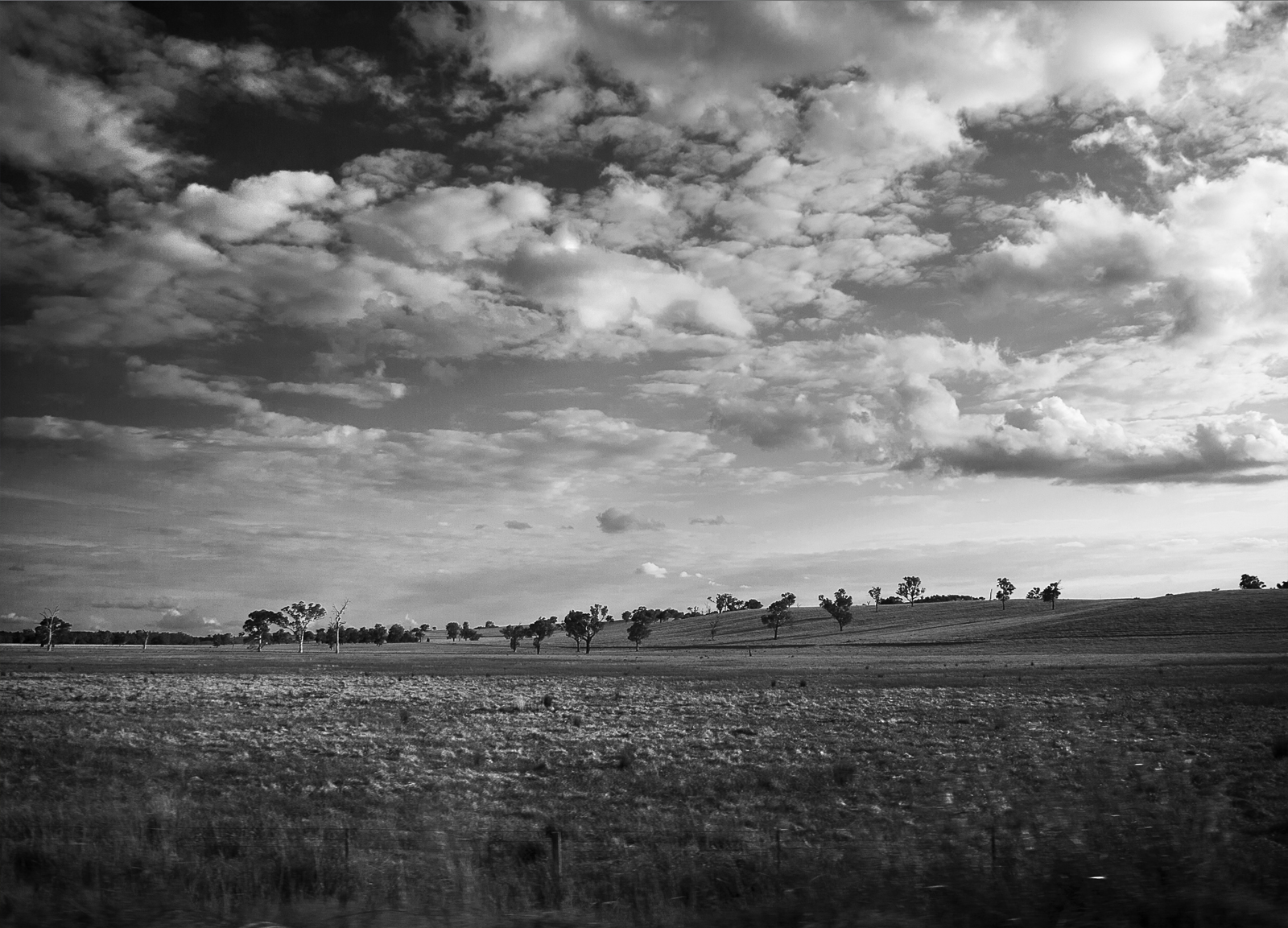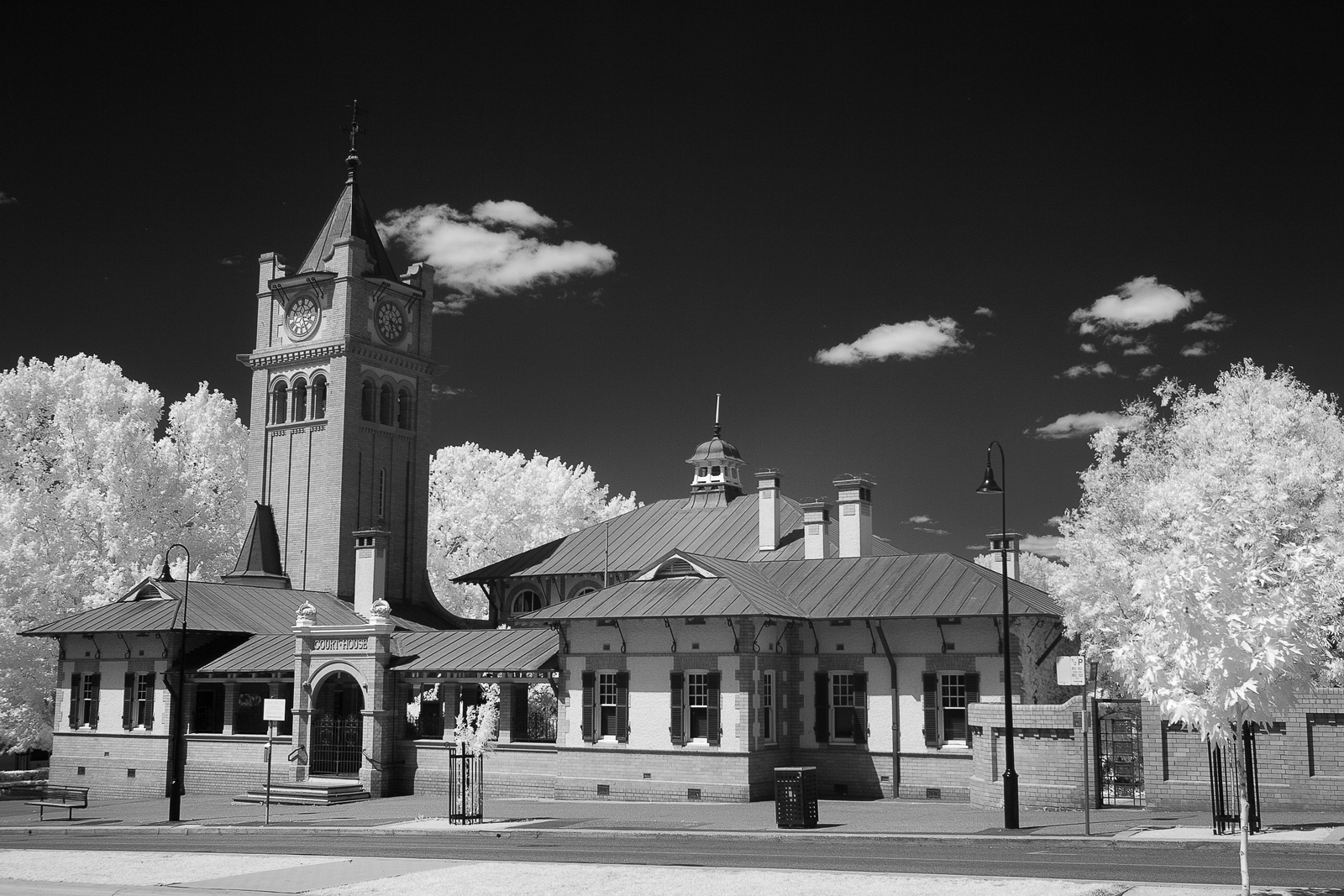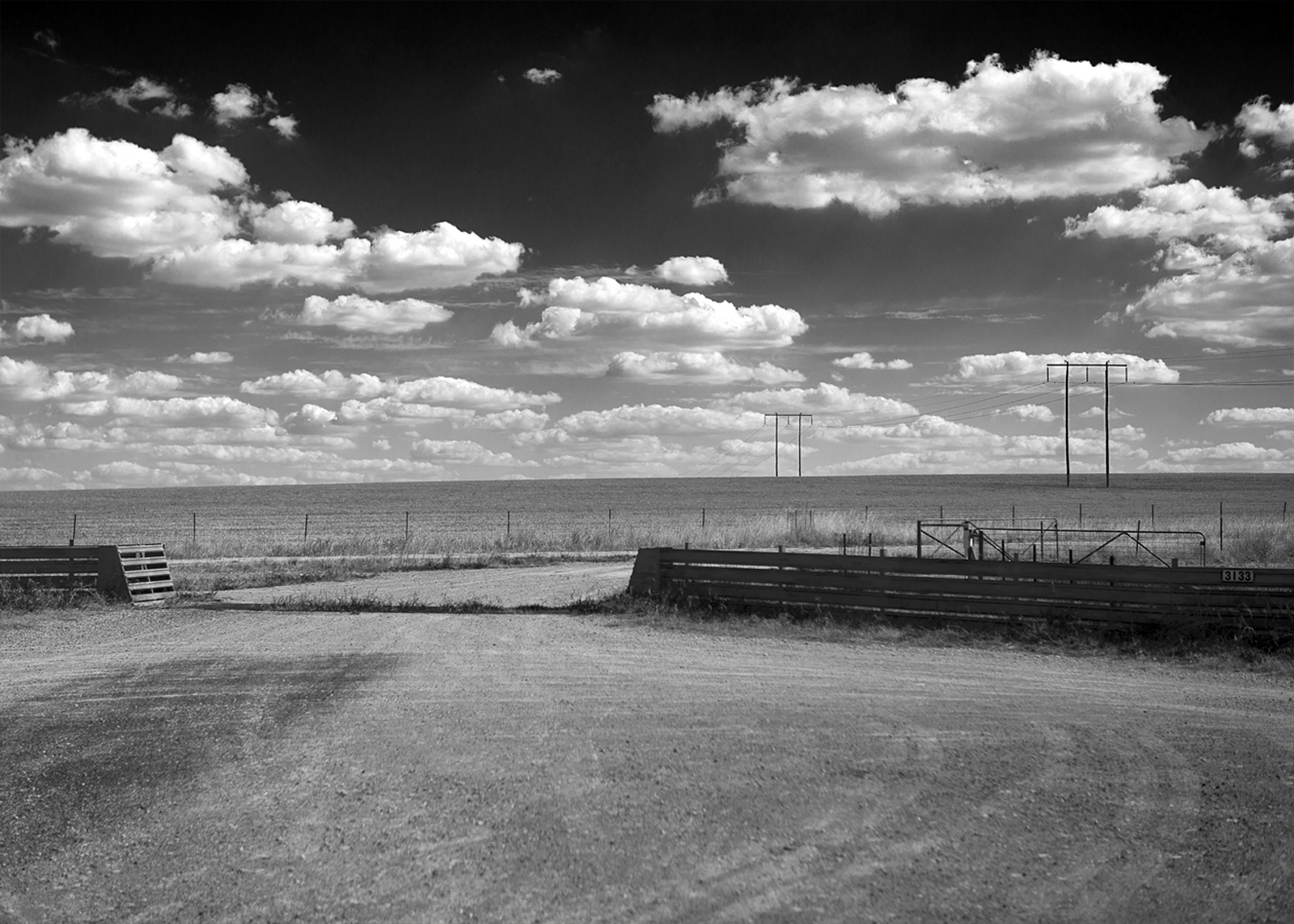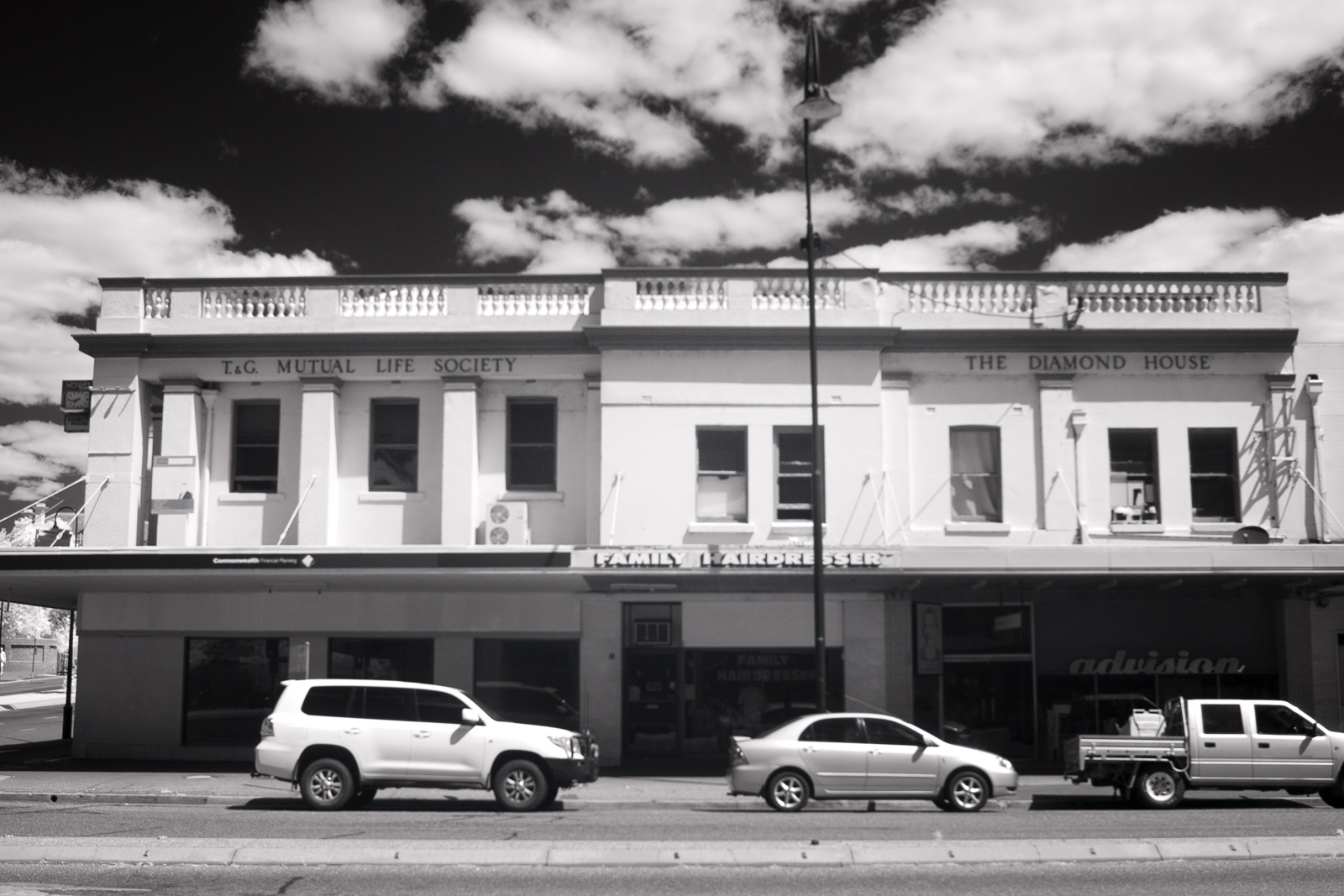Agrophilia: Exposing an Australian Regional Vernacular, or, Architectural Agrarianism
Author: Christopher Orchard, Charles Sturt University, Australia
To cite this article
Orchard, Christopher. “Agrophilia: Exposing an Australian Regional Vernacular, or, Architectural Agrarianism.” Fusion Journal, no. 4, 2014.
Abstract
Agrophilia is a neologism of the combining forms Agro- (from agriculture) and philia (denoting fondness for a specified thing). In this practice-as-research investigation agrophilia is to mean: a specific architectural and informational morphological similitude to the agrarian; a visible aspiration for the design of horizontal space and a subsequent abandonment of vertical information systems. Through the medium of the artist’s book (e-book), new photographic images are placed side by side with text to provide an ongoing investigation into the similarities and differences between the rural locality and the urban, and the proposed impact of the agrarian in urban re-development as an aesthetic decision born from European cultural expectations of landscape.
The research is specifically site-located within the Riverina, particularly that of the Wagga Wagga, Coolamon and Junee Shires yet echoes a larger Australian vernacular through its argument for a shared (predominantly white colonial) landscape that is at all occasions both a test case for domestic familiarity and residual feelings towards the landscape as frontier.
The ‘Wilderness’
The word wilderness has come in contemporary parlance to mean its opposite, something I wish to work to re-align with its truest formatting. A wilderness photograph in an art gallery is no more real than expecting wild animals at a zoo. One might then be capable of photographing aspects of nature, or a sensation of the wild, but not the natural or wild itself. It is to be viewed only in a closed cultural context of what that term wild itself has in recent decades come to mean. Deborah Bright in Of Mother Nature and Marlboro Men explains the landscape photograph’s connectivity with cultural symbolization by saying: ‘Whether noble, picturesque, sublime or mundane, the landscape image bears the imprint of its cultural pedigree. It is a selected and constructed text…’.1.
I then propose the definition of wilderness to be: uninterrupted nature free from human influence and not the product of cultural value statements. Herein lies the great wilderness conundrum, a philosophical difficulty; how can value be determined without cultural imposition. I try to determine this by arguing that there are to be two value statements, one by which value is measured in terms of its capacity to aid humans to culturally endure (perhaps philosophically active), and one by which value is judged by the capacity for wilderness to endure without interference (perhaps philosophically inert). This is to argue that areas of true wilderness need to be designated beyond the capacity for value judgments based upon its usefulness to our cultural expectations of modernist commodity systems. The latter of the two we have, it must be said, not been particularly suitably prepared in applying, or have been inadequately equipped to understand.
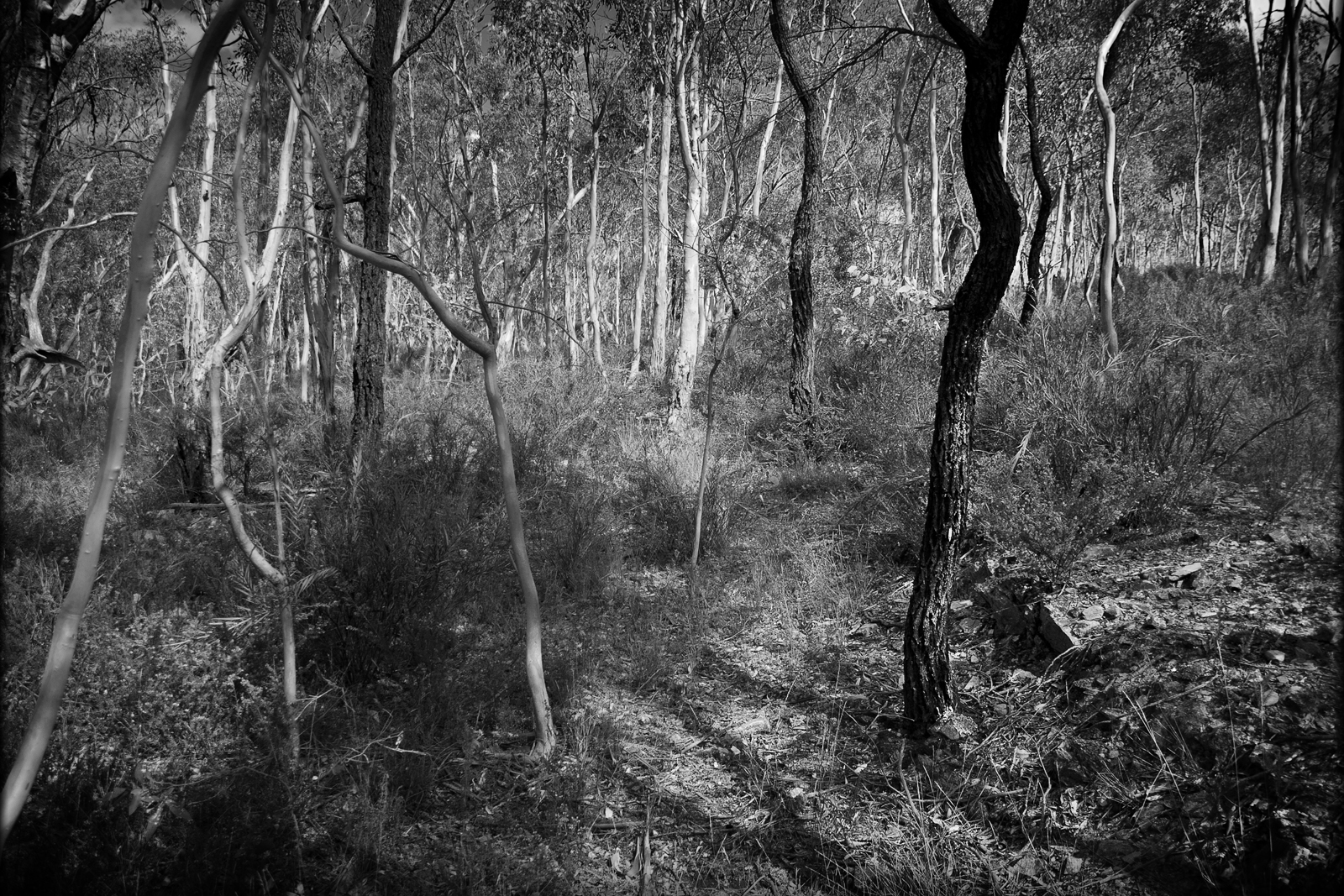
I then also search respectively for a look at the definition of other cultural terms. Landscape has its roots as a culturally bound word to a certain set of artistic expectations. We feel that we know what landscape means without actually being
able to easily voice a clear definition. It is like being asked to describe what a book is; we know, and simultaneously have difficulty in strict definitions, as with landscape definition is predominantly culturally learned. Cultural-Geographer John Brinkerhoff Jackson writes on the term landscape that, ‘What we need is a new definition. The one we find in most dictionaries is more than three hundred years old and was drawn up for artists’ 2. Perhaps here is the problem of the words traditions and institutions; it resides clearly in the realm of cultural expectation and as such we cannot apply the term to wilderness. ‘First it meant a picture of a view, and then the view itself’ 3; we cannot have a wilderness landscape by cultural definition. I don’t find this classification particularly troubling, other than the difficulty in finding a definition for the non-cultural ordering of a view of the natural; the defined topology of wilderness should always just be wilderness itself.

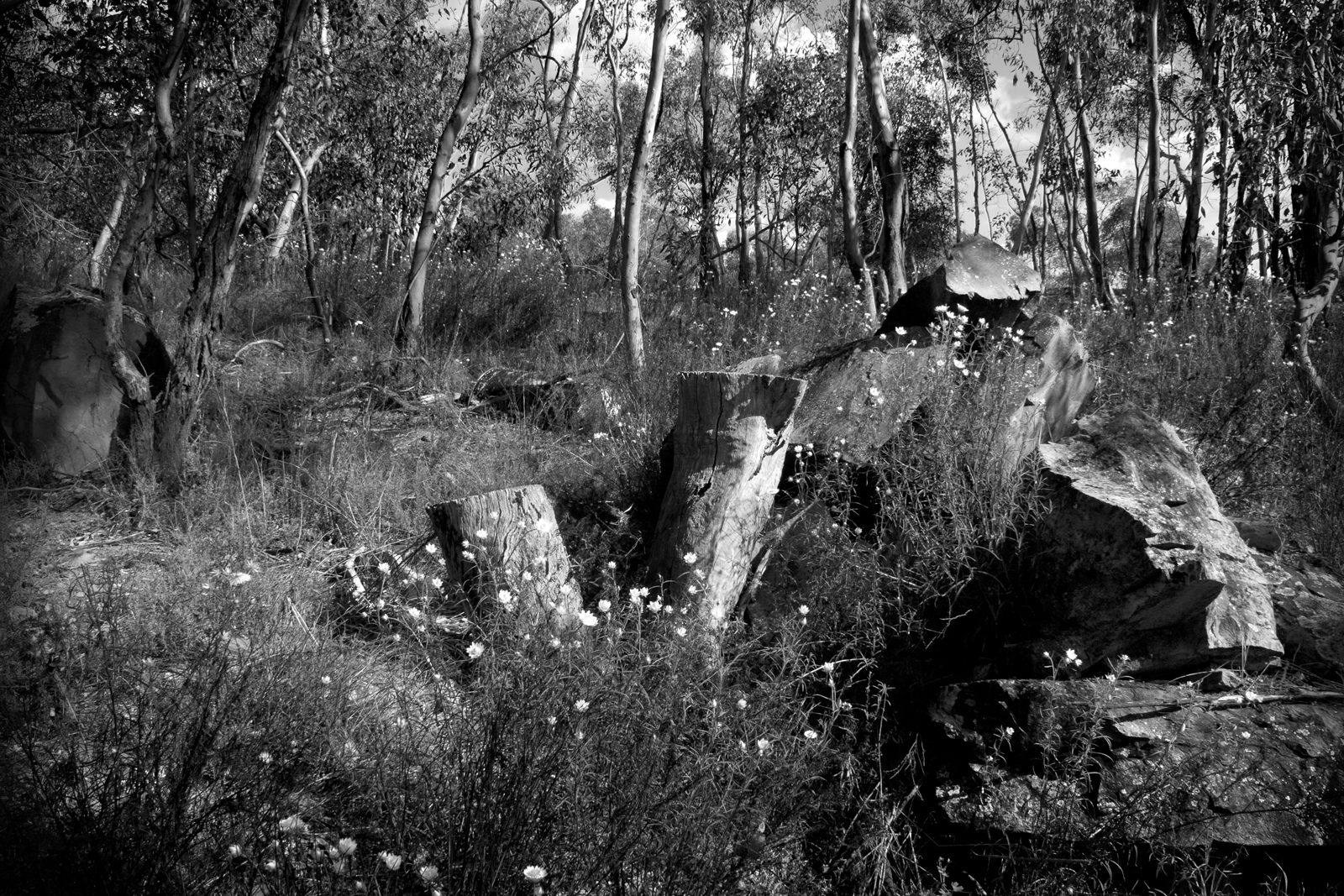
Perhaps this is exactly as one might describe the mind (a landscape of its own). Without the flexibility of seeing wilderness as simply wilderness (the imagined view) we would move in to further flexibility with the use of the non-determinant space, a word I largely wish to ignore and given that the component part land in landscape means something rigid and known it also defies our strict conventions. Perhaps wilderness and landscape will need to remain irrevocably separated due to their intrinsic and base values: one tied to natural expectation, the other to cultural expectation. Should one say wilderness and mean landscape, or vice versa, we would be well inclined to question their political motives and social intentions. It is as philosopher and social anthropologist Albert Borgmann writes in Crossing the Postmodern Divide that:
This country is blessed with an extraordinarily rich and spacious continent. Our inability to live more nearly with the energy it yields and with its capacity for wastes bespeaks an impatient and immature culture 4
Henceforth when we refer to wilderness, we are to mean tracts of physical space unencumbered with human cultural value, and to landscape, we are to refer as tracts of space encumbered with human culture and psychological associations. Then the wilderness must be sublime in the value of inherent natural worth and the anxieties it creates, and the landscape photograph must only be sublime in its inherent cultural or psychological worth as association to wilds and the cultural anxieties that creates. This is a clear distinction to make, for this might confuse us later when we consider why a contemporary landscape photograph could be considered a working act of the sublime, and we should not confuse those terms. A photograph of nature is not by its very being sublime even if it is of those things that we consider sublime (rivers, oceans, mountains, for instance); it is the applied cultural, philosophical and psychological frameworks to the reading of the intended meaning of such an item that makes it so. To be met by the perception of unencumbered wilderness (remembering it is only a perception of), strictly culturally moderated, the suspension of belief from landscape to wilderness is core component. The wilderness photograph cannot exist, the natural landscape photograph can, and does, and its success often depends on replicating sensation of the wilderness, or sensation of cultural learned ideas of wilderness. Borgmann writes that ‘outside of wilderness, everything shows the imprint of the human hand’ 5.
A Designed Landscape
In a 2006 paper Technology as Cultural Force for the Canadian Journal of Sociology Albert Borgmann writes on two standard views of technological influence and acceptance. Borgmann argues that in the determinist view that technology itself is an irresistible force either optimistically, or pessimistically measured. Jon Ippolito in At the Edge of Art describes this determinist standpoint with particular reference to the pessimistic by saying that ‘…a cultural phenomenon that acts like a virus might be technology. In the eyes of many observers, our tools seem to have wills of their own’ 6.
The instrumentalist view as a counterpoint argues that technology in and of itself cannot be positive or negative, but the way in which it is utilised and indeed the users of particular technological services shape the reflective positivity or negativity. If we are to follow the most commonly believed sociological standpoint and take an instrumentalist view that technology is a service that is both machinery and commodity, then the intrinsic worth of that commodity must take shape in its association with cultural value. If technology use is fluid based upon its user then the uneasiness and uncertainty it brings must directly reflect the user’s own feelings of mental and physical wellbeing. Ipplito centres an argument on contemporary expectations on the use of technology is a virus, and that art is antibody. This concept is drawn together by Freud when explaining man’s connectedness with the technological, which I describe in Lifton’s terms as a quest for what Robert Lifton coins as symbolic immortality:
… Man has, as it were, become a kind of prosthetic God. When he puts on all his auxiliary organs, he is truly magnificent; but these organs have not grown onto him, and they still give him trouble at times…7
In his writings on the psychology of death Robert Lifton discerns that a lack of motivation for continuity is the greatest source for emotional distress, therefore permanence and intransience offers stability of mind. Lifton details that one of our greatest ambitions is to escape the inevitability of death through five determinate methods of symbolic immortality in order to create a lasting memory of ourself. As creatures dependent upon complex cultural expectations, and western consumer culture dependent upon technological growth it makes sense then that there is an increased utilisation of digital mediums.
Through an expression of self in generating a proxy body technology seemingly becomes a superficially perfect second-life to program an enduring remembrance; a form of creative immortality. This is in stark contrast to the reality that the encoding of one’s thoughts is subject to a great deal of uncertainty, variability and unsympathetic mutability. In light of digital consciousness as supplementation of real consciousness the absurdity of true existence plays directly into the open hands of the volatility of raw-data and its consequent irrationality. The digital realm is a territory that offers memoriam in perpetuity but due to its own inherent mortality delivers uncertainty in droves and in light of this we must assume faith in this technological transcendence if we are to leave an online epitaph and ultimately allow ourselves to indulge our mortality through network connectivity. It is however a reality of living via technological prosthesis that ‘underneath the cycles of ups and downs is an inarticulate sense of disappointment and failure’ 8. This is what we might refer to as a succession of banalities that create a sensation of an unenlightened stuplimity (a neologism of stupidity and sublime) and is inherent in the tourist experience that I will explore more of shortly.
What Borgmann refers to specifically with the technological is that the culture of commodity is locked within a cycle of obsolescence and the prospect of purchase. Borgmann argues that the moment when you take possession of an object or service is the beginning in the decline of enjoyment. This is soon followed by a ‘sense of emptiness, the contemplation of another purchase, rising expectation, and so on. Everything in our economy is geared towards keeping the cycle strong’ 9 . What this shows is that this self-extension by technological means, whilst offering short-term pleasure, is also exemplar in the generation of a sense of cultural loss (not having the latest and greatest gadgetry), a pronounced disappointment and an increasing rate of diagnosed depression in the Western world. We can therefore assume with a great degree of clarity that any self-extension through a means that is designed to become obsolete will in turn generate its own continued sense of loss and mourning, and do little more than remind us of our own transitory existence.
The problem arises when a user cannot tell when they are being sold a product and are part of a system, and when they are making enlightened decisions for themselves. I maintain that much of middle class landscape (read coffee-table book) photography is in and of itself designed for product obsolescence and has very little to do with actual reverence for the landscape, and certainly has a skewed perspective of wilderness. John Brinkerhoff Jackson writes clearly on this landscape distinction in saying that the modern landscape photographer differs from the wilderness explorer in ‘… three specific ways; the contemporary experience is not solitary, it is not contemplative and it is less concerned with the awareness of the environment as a distinct phenomenon than it is with the cultivation of self awareness’ 10. I am not to posit that these flights against romantic tradition are in any way bad or of detriment to the art world at large, but they can be when one argues their work is romantic, contemplative and sublime, when it isn’t and can’t be. This is a return to the value judgements I raised earlier, to see nature as being valuable for its natural capacity to endure, or to see nature for its cultural value.
We should at first understand that our modernist lifestyle seldom permits the solitary act, signs and symbols of man’s dominion are ever-present, from the ubiquitous contrail to the incessant beeping of mobile phones. Similarly time for contemplation of externalised factors is rarely available, and when it does, often results in pronounced anxieties that turn our thoughts inwards. Then self-awareness in terms of determination of the self dictates further our cultural expectations of landscape. John Brinkerhoff Jackson describes that:
Our contacts with the environment are not only brief and infrequent, but scheduled, taking place on holidays and weekends, determined not by seasons, but by the routine of urban work. So these contacts are events to be looked forward to, planned, and long remembered. The natural environment thus becomes the setting of an experience, rather than of experience itself 11
These concerns are to be seen as a two-fold confrontation on the sense of self, through retreat to the familiar, and a growing nostalgic anxiety. Through the advent of the photograph, new and iconic images were dispersed that drew a burgeoning tourist trade selling the opportunity to see or experience the real. Tourism itself is a cultural artefact that is not free from the confines of commodious value statements based upon capacity for human use. The tourist was searching for the real, but in essence would be sold a sensation of it, and through a mixture of anxiety and apprehension assumed a natural simplification of experience as experience itself. Deborah Bright in Of Mother Nature and Marlboro Men describes this Americanized tourist experience as being culturally learned in saying that ‘… the western landscape has become a complex construct. It is the locus of the visually spectacular, culled from the total sum of geographic possibilities and marked for tourist consumption’ 12. The tourist experience, and the photograph of landscape, might very well be said to share this experience. This is to say that the tourist landscapes of western culture are a complex cultural document and that here ‘… nature has been designed to help us absorb its benefits as efficiently as possible: tourist literature and park display signs ensure we are exposed to the peak experiences at the site’ 13. Bright continues this line of questioning in saying that:
Beauty, preservation, development, exploitation, regulation: these are historical matters in flux, not essential conditions of landscapes. The political interests that landscape organization reveals are subjects that the practice of landscape photography has not clearly addressed 14
It is precisely these shifting cultural conditions that frame the tourist nostalgia and subsequent anxieties, and as Bright notes, are necessary ingredients for investigation in their application to the photographic landscape. These anxieties are born in aggressive individualism, are a kind of hyperactivity, and to reiterate Borgmann, bespeak an immature (modernist) culture.
The Strip
The pervasive strip, a commodity space whose design, form and function followed the spreading of the automobile. Here a new freedom of movement established popularity in the drive-in, the drive-through, and the quick stop. Forming up and down the cheap lands adjacent to railway tracks or major highways there is a pleasure to be found in the familiarity of their design and their similar arrangements across the nation. Passing through such spaces to the tourist is a form of cultural nostalgia, a sense of homeliness tinged with an essence of hard work and perseverance.
The strip looks much the same at either end of town separating the spaces of home life and hard work. There is very little variation between the two ends of town, and really, very little variation in the design of the strip nationally. One feels a sense that they could be approaching any town or any civic-minded space where the township has been significantly altered by burgeoning populations and changing travel systems. As each new workshop pops up, the strip grows ever longer and ever outwards. It is clear here the impact of the automobile, the flow of information in these spaces favours the horizontal and rejects the vertical.
Rather than being a space of civic malaise, this is an active space of civic duty, despite its modernist failings.
Frontier Territories
A new form of cheap housing has appeared and taken hold of the surroundings in much of regional Australia’s country towns, that of the transportable or demountable home. Speaking of a kind of vernacular character these speculative spaces allow the kind of flexibility of living nowhere and somewhere simultaneously. Never tied down to a specific site or space these dwellings provide shelter and temporary residence to their owners.
Much could be theorised about the role these dwellings have in the overall march of the horizontal, the Australian dream and land ownership more broadly. They are one form of housing that challenges the conventions of the political boundaries of land title.
Horizontality and the Death of the Second-Storey
Once the province of Doctors, Lawyers and all manner of moneyed gentry, the second storeys and above of the regional shopping malls has lost its appeal. The doctors, lawyers and accountants have long since outgrown these premises and they no longer service the needs of such businesses. Many are now boarded up to prevent entry, converted to cheap student accommodations or sport a perpetual for lease sign.
The lower storeys still harbour businesses looking for cheap rents, flexible (horizontal) spaces and a dominating facade. This facade is all that is left of much of the old grandeur of these buildings, yet they retain a simplistic, if not vernacular beauty in their presentation, their perseverance and their austerity.
A Home in the Suburbs
The love of the horizontal can be seen in the perpetuation, yet contemporary reinterpretations of the federation home. This home sits on large tracts of land, uses horizontal information flows to provide its users and owners with the optimum ease of navigation.
According to the Australian Bureau of Statistics; “Over time the typical house in Australia has evolved from having three bedrooms, one bathroom and separate living areas into a more open plan, including a fourth bedroom and ensuite facilities. Popular extras, such as rumpus rooms, walk-in wardrobes, walk-in kitchen pantries and the like, may add to the overall size of modern homes. This has resulted in an increase in the size of new residential buildings.”

Australians are guilty of having the largest houses on average of any country in the world. Nowhere and no one loves the horizontal more than the Australian middle class.
End Notes
This series of works are intended to operate as a thought piece and beginning investigation into ideas of agrophilia and to start to describe some of the contacts we may have with it. It remains, as with many photographic explorations, a work in progress.
Bibliography.
Azoulay, Ariella. (2001). Deaths Showcase: The Power of the Image in Contemporary Democracy. Boston: MIT Press.
Baer, Ulrich. (2005). Spectral Evidence: The Photography of Trauma. Boston: MIT Press.
Balk, David. (2007). Handbook of Thanatology: The Essential Body of Knowledge for the Study of Death, Dying and Bereavement. London: Routledge.
Becker, Ernest. (1973). The Denial of Death. New York: Free Press Paperbacks.
Blais, Joline, & Ippolito, Jon. (2006). At the Edge of Art. London: Thames and Hudson.
Bola, Phillip De. (1989). The Discourse of the Sublime: Readings in History, Aesthetics and the Subject. Oxford: Blackwell.
Borgmann, Albert. (1992). Crossing the Postmodern Divide. Chicago: The University of Chicago Press.
Carter, Paul. (1987). The Road to Botany Bay: An Exploration of Landscape and History. Saint Paul: University of Minnesota Press.
Castricano, Jodey. (2001). Cryptomimesis: The Gothic and Jacques Derrida’s Ghost Writing. Québec: McGill Queen’s University Press.
Dodds, Joseph. (2011). Psychoanalysis and Ecology at the Edge of Chaos: Complexity Theory, Dealeuze | Guattari and Psychoanalysis for a Climate in Crisis. East sussex: Routledge.
Elkins, James. (2011). What Photography Is (1 ed.). New York: Routledge.
Giblett, Rod, & Tolonen, Juha. (2012). Photography and Landscape. Chicago: The University of Chicago Press.
Goffman, Erving. (1959). The Presentation of Self in Everday Life (1 ed.). New York: Random House.
Grau, Oliver. (2003). Virtual Art: From Illusion to Immersion. Boston: MIT Press.
Grunenberg, Christoph. (1997). Gothic: Transmutations of Horror in Late 20th Century Art (2 ed.). Boston: MIT Press.
Hall, Calvin S., & Nordby, Vernon J. (1973). A Primer of Jungian Psychology. New York: Penguin Books.
Harrison, Charles, & Wood, Paul. (2003). Art in Theory 1900-2000: An Anthology of Changing Ideas (2 ed.). Carlton: Blackwell Publishing.
Jackson, John Brinkerhoff. (1970). Landscapes: Selected Writings of J.B. Jackson (E. H. Zube Ed.). Boston: The University of Massachusetts Press.
Jackson, John Brinkerhoff. (1984). Discovering the Vernacular Landscape. London: Yale University Press.
Laplanche, Jean. (1999). Essays on Otherness. New York: Routledge.
Lifton, Robert Jay. (1993). The Protean Self: Human Resilience in an Age of Fragmentation. Chicago: The University of Chicago Press.
Morley, Simon. (2010). The Sublime (S. Morley Ed.). Cambridge: MIT Press.
Mullvaney, Richard, Addison, Jon, Haygarth, Nic, & Malor, Deb. (2013). Into the Wild: Wilderness Photography in Tasmania. In Q. V. M. a. Gallery (Ed.), (1 ed., Vol. 1, pp. 120). Launceston: Queen Victoria Museum and Gallery.
Murray, Janet H. (1997). Hamlet on the Holodeck. New York: The Free Press.
Neimeyer, Robert A. (1994). Death Anxiety Handbook: Research, Instrumentation and Application. New York: Taylor and Francis.
Newhall, Beaumont. (1982). The History of Photography: from 1839 to Present (B. Newhall Ed. 1st ed.). New York: The Museum of Modern Art.
Nye, David. (1994). American Technological Sublime. Cambridge: MIT Press.
Roszak, Theodore. (1995). Ecopsychology: Restoring the Earth, Healing the Mind (T. Roszak, M. Gomes & A. Kanner Eds.). San Francisco: Sierra Club Books.
Spilka, Bernard. (2003). The Psychology of Religion: An Empirical Approach (B. Spilka, R. Hood, B. Hunsberger & R. Gorusch Eds. 3 ed.). New York: Guilfor Publications.
Tarlow, Sarah. (1999). Bereavement and Commemoration: An Archaeology of Mortality. Oxford: Blackwell Publishers.
Virillio, Paul. (2006). Art and Fear (J. Rose, Trans.). Cornwall: Continuum Books.
Wallace, Patricia. (2001). The Psychology of the Internet. New York: Cambridge University Press.
Wells, Liz. (2008). Photography: A Critical Introduction 3rd Edition (L. Wells Ed. 3 ed.). New York: Routledge.
Williams, Bernard. (1973). Problems of the Self. London: Camrbidge University Press.
Williams, Howard. (2003). Archaeologies of Remembrance: Death and Memory in Past Societies. New York: Kluwer Academic Publishers.
Winnicott, Donald Woods. (1971). Playing and Reality. London: Tavistock Publications Limited.
About the author
Christopher Orchard is a Lecturer in Photography and interdisciplinary researcher in the School of Communications and Creative Industries at Charles Sturt University. Christopher’s research draws from a wide field of discourse on landscape heath, natural resource management, trauma studies, terror management theory and broad art theory and culture to generate transdisciplinary dialogue on landscape issues utilising practice-led research methodologies.
- Bright, Deborah. 1985. Of Mother Nature and Marlboro Men: An Enquiry into the Cultural Meanings of Landscape Photography ↩
- Jackson, John Brinkerhoff. 1984 Discovering the Vernacular Landscape. Yale University Press ↩
- ibid ↩
- Borgmann, Albert, 1992. Crossing the Postmodern Divide. The University of Chicago Press. ↩
- ibid ↩
- Blais, J. & Ippolito, J. 2006. At the Edge of Art. London: Thames and Hudson ↩
- Freud, S. 1974. The Standard Edition of the complete Psychological Works of Sigmund Freud, Volume 21, Civilisation and its Discontents. Trans; James Strachey. London: Hogarth Press. ↩
- Albert Borgmann 2006. Technology as Cultural Force: For Alena and Griffin. University of Toronto Press ↩
- ibid ↩
- Jackson, John Brinkerhoff. 1984. Discovering the Vernacular Landscape. Yale University Press ↩
- ibid ↩
- Bright, Deborah, 1985. Of Mother and Nature and Marlboro Men: An Enquiry into the Cultural Meanings of Landscape Photography ↩
- ibid ↩
- ibid ↩

